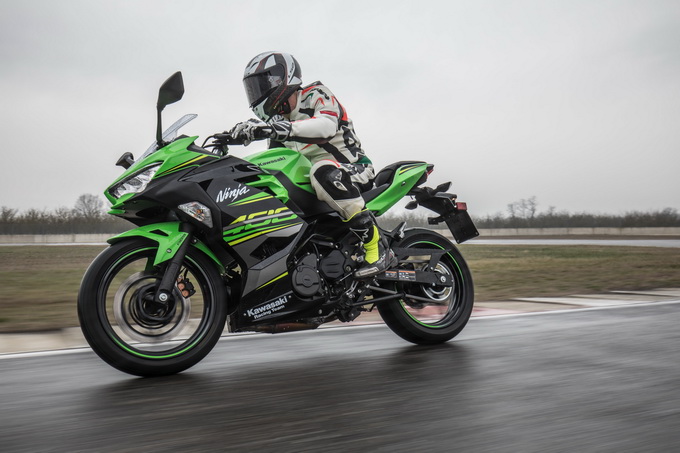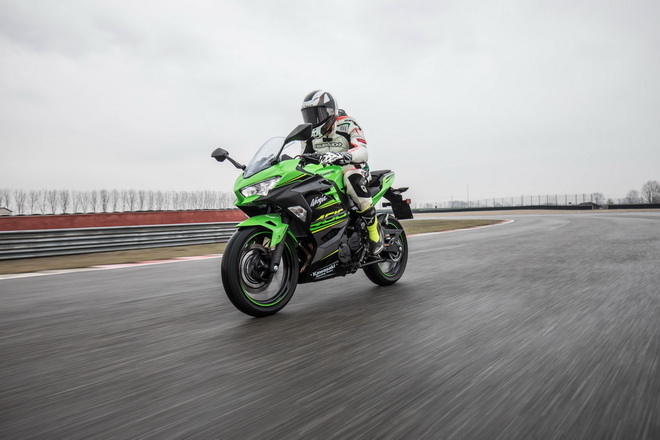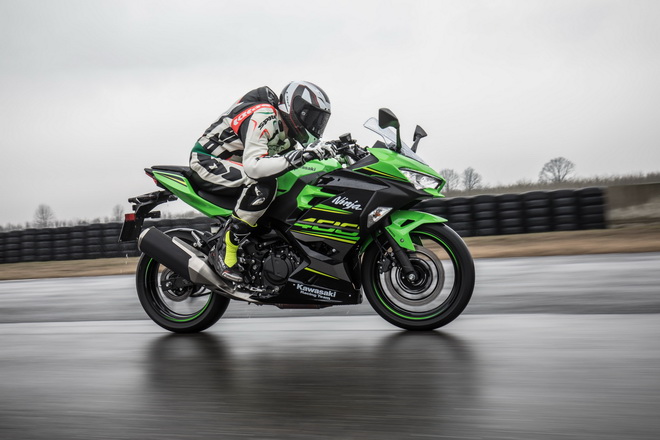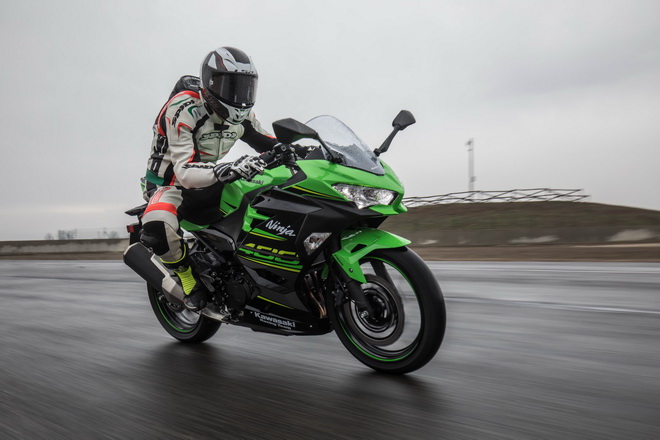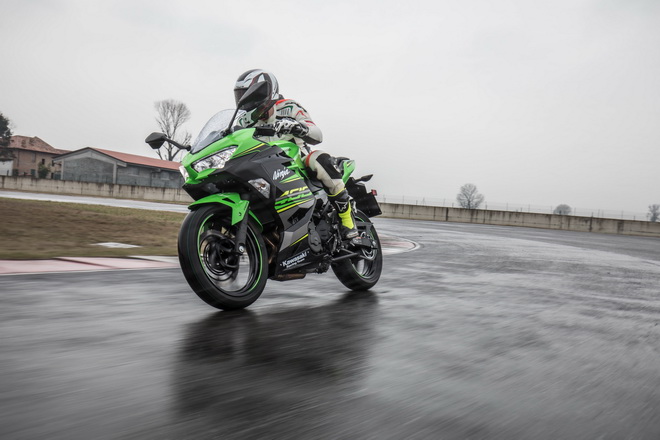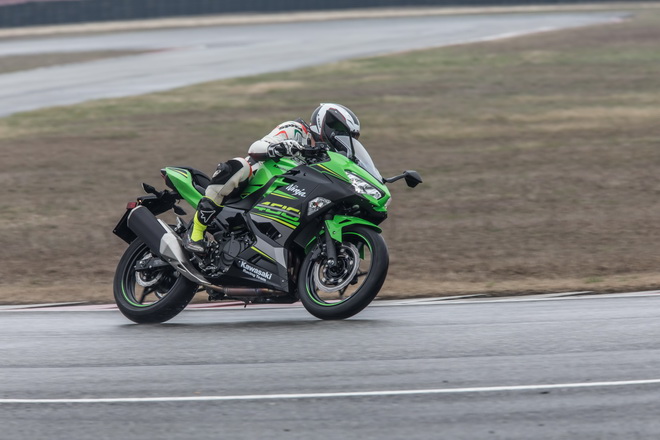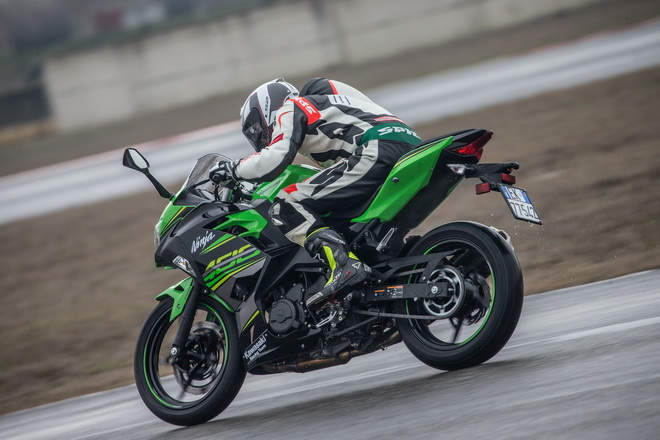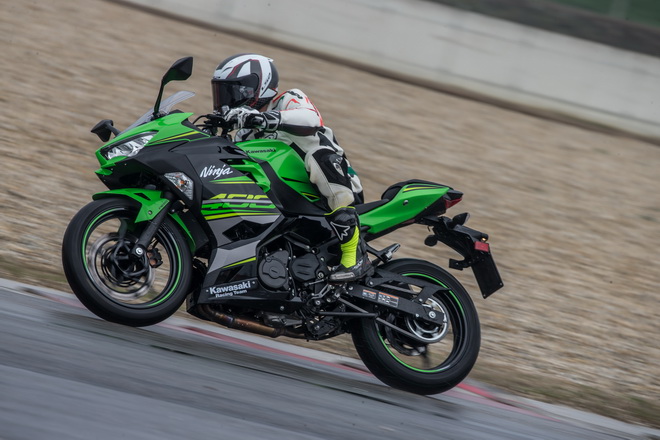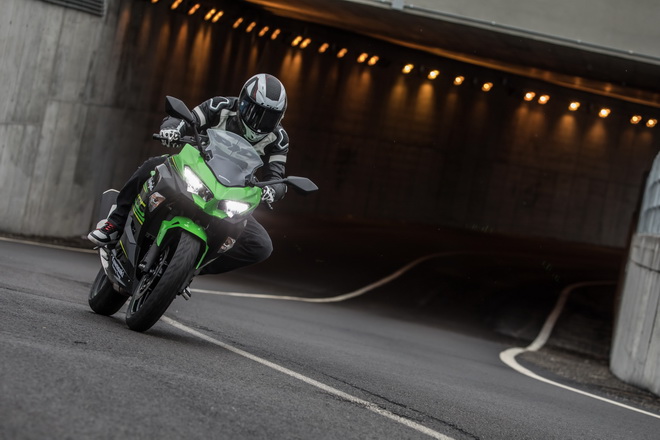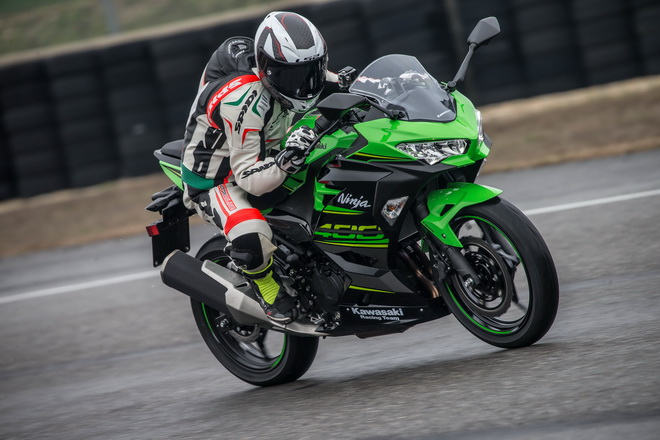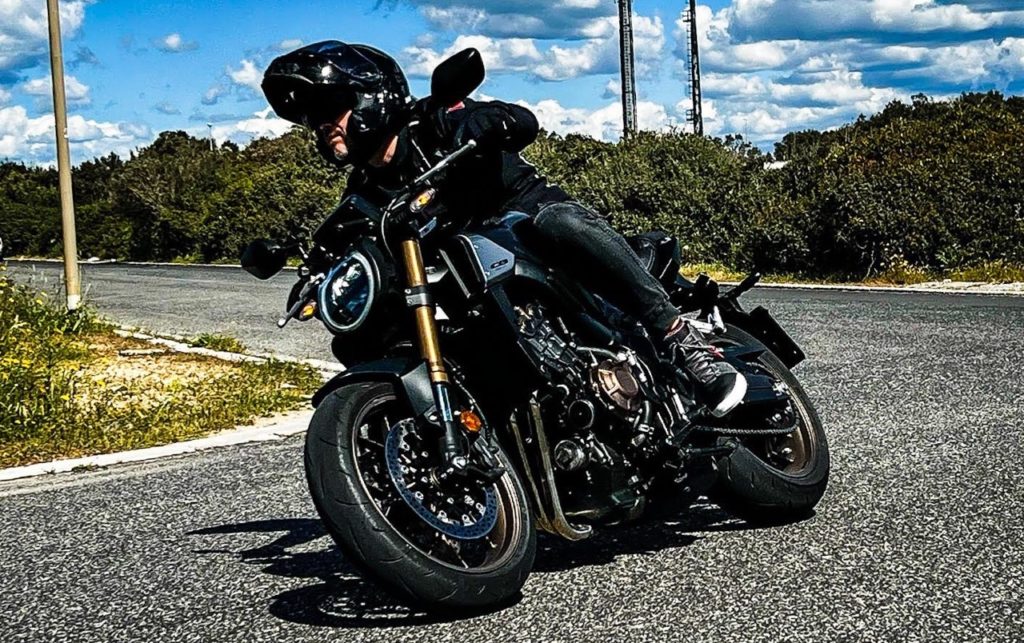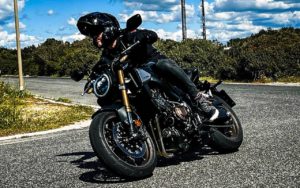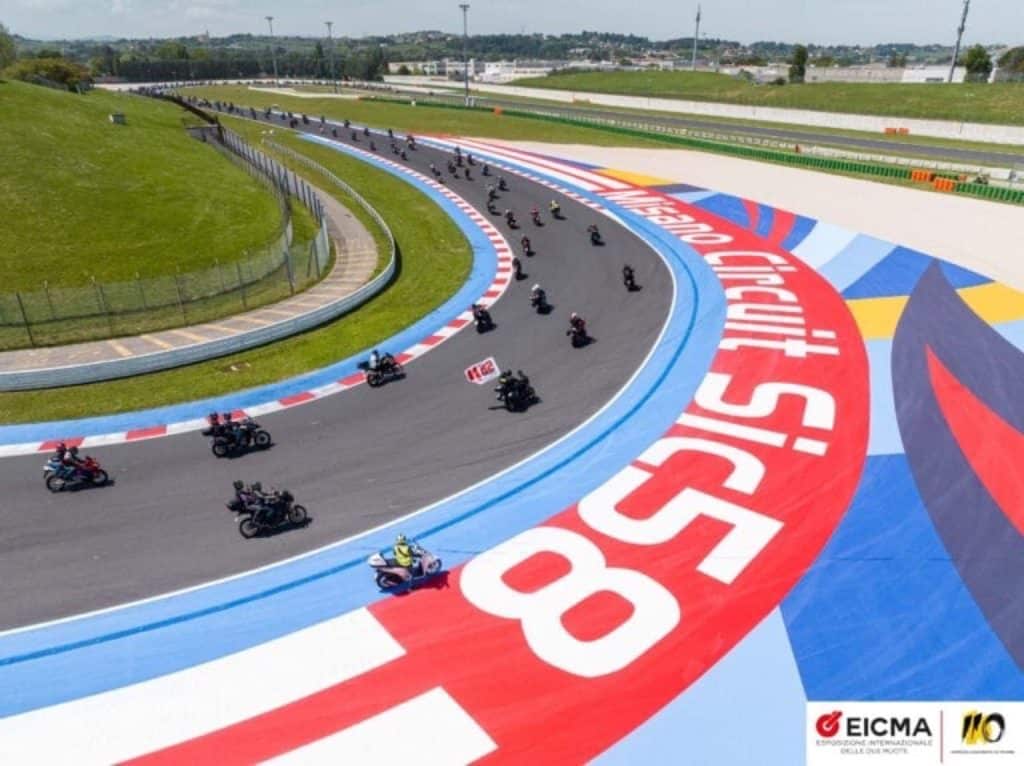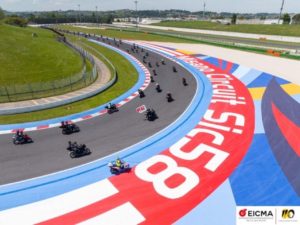Kawasaki Ninja 400: little riders of tomorrow, but not only [ROAD TEST VIDEO]
Lighter and more powerful, it guarantees great fun on the track and also on the road
In 2008 the Ninja 250R made its debut, the younger sister of the most powerful Kawasaki sports cars, a motorbike that was suited to customers who wanted a light motorbike, but at the same time with interesting performance. The name "Ninja" is synonymous with absolute excellence and, 10 years later, Kawasaki has created a new model with the aim of ensuring maximum fun, both when riding on the road and on the track, capable of collecting the best characteristics of large motorbikes sporty, with an added racing touch.
Times pass and categories evolve. The little Ninja 400 has a style directly inspired by its bigger sister, the ZX-10R, the new green girl from the Japanese company ready for anything. Of course, you can't make a missile out of it, but this new model is able to offer significantly better performance compared to its predecessor, the Ninja 300. In fact, the engine is a 399 cc forward-facing twin-cylinder capable of delivering 45 HP at 10.000 rpm, 7 more than the model it replaces.
The overall weight of the Ninja 400 has also been revised. Despite an increase in displacement, it now stops at 168 kg, 8 less than the 300, thanks to a light and compact frame which also guarantees ease of driving, intuitive and capable of satisfying both the most experienced motorcyclist and the novice novice. A road bike that knows a lot about racing and which this year, thanks to the collaboration between Kawasaki and Team Go Eleven, will be on the field in a trophy, to face in the best possible way a championship divided into five races, within the 300 class of the Wheelup MES trophies (Motoestate trophy). A championship that provides each driver with the right package to face a minimal but advantageous expense, because at stake is the debut in the SS300 world championship, not bad!
Looking like a little pest, the Kawasaki Ninja 400 has a futuristic style inspired by the mighty Ninja H2, with some evident features both in the front spoiler under the fairing and in the tail, with a compact tank. The lighting is entrusted to the new double LED headlights in full Ninja style which allow excellent, far superior brightness, both for the front and for the rear LED group. The large and clearly visible instrumentation is also sporty, the same as its big sister the Ninja 650, complete with information, ensuring excellent readability thanks to the LCD screen which shows the gear engaged, the range indicator and the odometer and is also composed of a large analog dial for the tachometer. The mirrors, repositioned higher and further away from the rider, are new and offer better visibility, a careful consideration that translates into a relaxed ride contributing to a high quality of the Ninja 400. A great look, if you want a minimalist look, are the "built-in" direction indicators, which have a more elegant and at the same time sporty appearance, easy to insert thanks to the suitable position of the controls on the handlebars.
Once in the saddle, the 400 Ninja 2018 ensures an immediate feeling with the rider, a comfortable, low and well-padded seat, the seat height of 786 mm and its compact design allow you to rest your feet comfortably, even for those who don't he is “long-legged”. A more upright riding position, aimed at maximum comfort but at the same time ensuring good control of the bike with which it is easy to have fun, with high footrests, moved forward just enough to be sporty without ever tiring.
The total protagonist of the Ninja 400 MY 2018 is undoubtedly the new 399 cc engine, redesigned from scratch, which allows even easier and more intuitive control of the vehicle thanks to the superior performance compared to the previous model, guaranteed by the new vertical intake ducts which , with the help of a new, larger air-box, ensure more efficient suction, making it very enjoyable both when driving easily on the road and when you want a sportier ride on the track. It must be said that this engine, despite having increased the displacement, was lighter and more compact. The new radiator fan shroud has also been revised for greater comfort; thanks to the new design, the hot air from the engine is expelled through openings in the fairing on the sides. Furthermore, for greater safety, a particular assisted slipper clutch has been introduced on the Kawasaki Ninja 400 2018, more compact (139 mm versus 125 mm in diameter), with a greater thickness of the discs, which avoids the annoying and, in some situations, dangerous locking of the rear wheel, which occurs for the most “detachers” when braking at the last metre. The benefits of a clutch of this type can be seen in sporty driving and when downshifting several gears at a time.
The frame of the Kawasaki Ninja 400 20018, it is trellis, similar on a structural level to that of the Ninja H2. This frame is rigidly mounted to the engine, which is used as a load-bearing member. A technical choice that offers benefits in terms of torsional rigidity and robustness, not bad, in our opinion. Another very important consideration is the study that was done for the swingarm fixing plate. As already happens on the Ninja H2, the small 400 has also been equipped with a swingarm fixing plate, which allows the latter to be fixed to the rear side of the engine, increasing stability and contributing to a weight reduction. Trailing and ground clearance are dimensions that make you understand all its determination; therefore 92 mm for the first and 140 mm for the second, resulting in a headstock inclination of 24,7°.
As for the front fork, which is more rigid and has 41 mm legs (the previous one had 37 mm ones), it enjoys greater stability, flexing less when braking, ensuring the rider has greater feeling with the front wheel. With all these small but significant interventions, the Kawasaki Ninja 400 2018 reached a weight of just 164 kg in running order, 8 less than its younger sister, the Ninja 300. The last, but fundamental component, is the braking system. At the front we find a 310 mm semi-floating petal disc, the same used on the ZZR 1400, which ensures excellent braking power, even in the most violent braking situations. As for the rear, we find a single 220 mm petal disc with double-piston caliper. The Ninja 400 is equipped with Nissin's latest ABS unit, the lightest and most compact on the market.
The small super sports car from Kawasaki it is sold for 6.090 euros turnkey, to which 200 euros must be added for the version with the KRT Edition 2018 color (Lime Green/Ebony), an alternative to the Metallic Spark Black.
The Performance Edition is also immediately available, for an additional 700 euros, to give the little Ninja an Akrapovic exhaust, passenger seat cover kit and adhesive protection on the tank. The list of accessories is also rich, we find: 12V socket, radiator protection, high seat (+30 mm), stickers for the rim channels, 4 L tank bag, tank protector, oversized windscreen, rear seat cover and finally the Akrapovic exhaust.
We're finally here, the chosen circuit is the Tazio Nuvolari. We push the bikes towards the pit lane and prepare to get on the saddle: the riding position is very good, the saddle/handlebar/footpeg triangulation is well balanced and transmits an excellent feeling, thanks also to the freedom of movement, as for the footpegs , which are neither too high nor too low. The riding position is therefore a good confirmation, you are very inserted into the bike, legs and arms however remain relaxed and, if we really want to nitpick, we would have liked the semi-handlebars to be slightly more open.
Off we go. We leave the pit lane and the straight ends immediately, curves to the right, stays wide and then closes again to the right, hairpin to the left while the speed increases. Left and right, turn in third to the right and a few seconds after setting off we already realized how much fun this little Kawasaki 400 is. The more the laps go by, the more we find more and more confidence. Too bad about the rain! The first laps on the Kawasaki Ninja 400 are, rightly, an apprenticeship, but they confirm its qualities as an easy and valid bike between the curbs. There is sufficient space to move back in the saddle during the main straight, lying down on the tank. The low end pull is good and regular, we all know that 45 horsepower is a little bit in absolute terms, but in the end you don't need that much to have fun, it's better to have a few and make good use of them, than to have a lot and not know what to do with it.
The engine, in fact. The forward-facing inline twin-cylinder, at low revs (2000/3000 rpm) has good thrust, capable of delivering both good power and decent torque. With this character, the new Kawasaki Ninja 400 is perfectly at ease even on urban routes. The gearbox has a slightly short ratio, which however gives the right liveliness and decent acceleration. Having chosen the insertion point of each curve, we release the brakes and the Ninja 400 has no uncertainty, where you put it it stays, also thanks to a chassis that makes it easy to handle and very reactive, you move with your body and it follows you. Even on the road you can appreciate the handling and comfort in medium and long range transfers, where the direct and balanced handling of this Ninja 400 emerges, with light movements and extreme ease in overtaking. The well-calibrated suspensions show good smoothness and smooth operation thanks also to an optimal weight balance. On the road they appeared softer, as when the irregular road surface of our test triggered small sways, but it is always possible to adjust them. Large and powerful brakes, thanks to the 310 mm disc, make it safe in every situation. To conclude, there is little to regret about the big sister when you get on the little Ninja, because it turned out to be a really fun and easy bike, both on the track and on the road. An excellent bike to start with, almost as if you were in school to learn, but a good test to compare yourself with even when you are a "university" of two wheels, just like the two SBK riders Johnny Rea and Tom Sykes.
Track test clothing:
Leather suit: Spidi Track Wind Pro
Gloves: Spidi Carbo 3
Boots: Stylmartin Stealth
Helmet: LS2 FF323 ARROW C EVO FURY CARBON WHITE
Road test clothing:
Spidi jacket and trousers
Alpinestars Lunar shoe
if you want to always be updated on our news
Follow us here

